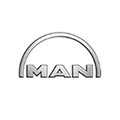02_18 Economic partnership agreement between the EU and Japan – major change for the European automotive industry
Negotiations on the economic partnership agreement between the European Union and Japan were concluded on 8 December 2017. Both for Brussels and for Tokyo, it is the most comprehensive economic understanding in their history. The economic zone to be created as a result of its entry into force will cover the area inhabited by 600 million people, generating around 30% of the world’s GDP. The leaders of both signatories consider that the agreement will create huge commercial and investment opportunities and contribute to the strengthening of economies and societies of both the EU and Japan.[1] The importance of the new trade agreement for the whole world appears to be even greater in the light of changes in the political course by the United States, which have recently abandoned the conclusion of multilateral trade agreements.
[1] Joint statement by the President of the European Commission Jean-Claude Juncker and the Prime Minister of Japan Shinzo Abe of 8 December 2017.
The agreement is of considerable significance for international trade in goods. According to the European Commission's estimates, the value of customs duties on products exported to Japan removed by the new agreement will amount to billion euros per year, 90% of which will be removed on the first day of the agreement duration. Ultimately, full implementation is supposed to lead to the removal of customs duties on 97% of goods imported by Japan from the EU. The European Commission assumes that this will contribute to a 16-24% increase in exports to Japan.
The protection of interests of sensitive sectors of the EU economy, including the automotive industry, has been subject to intense negotiations. In the final shape of the agreement, customs duties on cars are to be phased out progressively, by lowering them over a period of 7 years. Customs duties on car parts are to be reduced faster. However, regardless of the customs duty matters, the agreement will bring down many non-tariff barriers, which is intended to contribute to facilitating the reciprocal access of the EU and Japanese traders to their markets. For the automotive industry, harmonisation of product safety and environmental standards can be of the greatest importance, so that cars in the EU and Japan will have to comply with the same requirements, thereby avoiding the necessity of retesting and certification in the case of their export. The elimination of non-tariff barriers on vehicles exported from the EU has been further secured by a safeguard mechanism enabling the European Union to reinstate customs duties in the event of a re-introduction of obstacles for EU entrepreneurs in the future.
The European Commission's reports analysing the potential impact of the agreement on the automotive industry have concluded that the implementation of the agreement with Japan will not translate into radical changes in the structure of both countries’ markets, however, costs incurred by companies in connection with international activities will be limited[1]. The great majority of the Commission’s communications focus on the benefits for European entrepreneurs, however, to get the whole picture, they should be also checked against the benefits derived by their Japanese competitors. We are soon to assess in practice the effects of entry into force of the agreement – currently both parties are focused on internal procedures which precede the signature, ratification and full implementation of the agreement. Representatives of the European Commission consider that the work related to the translation and codification of the text of the agreements will last until mid-2018, which would allow us to predict that the agreement will enter into force at the beginning of 2019.
Paulina Szwed – Manager in the Tax & Legal Department at PwC
Michał Pępek – Consultant in the Tax & Legal Department at PwC
[1] Trade Sustainability Impact Assessment of the Free Trade Agreement between the European Union and Japan – Final Raport

























































